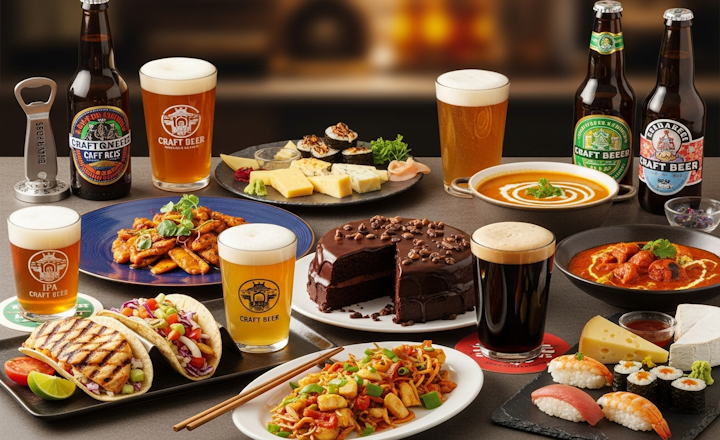
Craft beer has evolved far beyond a simple drink to enjoy on a hot afternoon. Today, it’s a diverse world of flavours, aromas, and styles that can complement and elevate the food you put on your plate. Whether you’re indulging in a fine dining experience or firing up the barbecue at home, the right craft beer pairing can transform a meal into something memorable. And for those who love to showcase their passion for good brews, even collecting unique beer merch has become part of the culture.
In this guide, we’ll take a deep dive into the art of pairing craft beer with food, breaking down styles and flavour profiles so you can confidently match your next pint with the perfect dish.
Why Pair Food and Beer?
Pairing food with beer is about balance. Just as wine complements a meal, beer can highlight flavours, contrast textures, and enhance the overall dining experience. The carbonation of beer acts as a palate cleanser, while the malt, hops, and yeast contribute layers of flavour that can either complement or contrast the food.
General Rules of Pairing
Before diving into specific styles, here are a few guiding principles:
- * Match intensity: Pair bold beers with bold foods, and lighter beers with more delicate dishes.
- * Complement or contrast: Choose flavours that mirror each other (like a malty amber with roasted meats) or deliberately contrast (like a hoppy IPA cutting through rich cheese).
- * Balance richness: Use beer’s carbonation and bitterness to balance fatty, creamy, or fried foods.
Pairing Guide by Beer Style
Pale Ale
Profile: Bright, hoppy, refreshing with citrus or floral notes.
Best with: Grilled chicken, fish tacos, or light salads. The crisp bitterness cuts through oils, while the hops brighten lighter flavours.
IPA (India Pale Ale)
Profile: Bold hop character, often with citrus, pine, or tropical fruit.
Best with: Spicy dishes like Thai curry, Mexican tacos, or hot wings. The bitterness balances spice while the hops enhance bold flavours.
Amber Ale
Profile: Malty, toasty, with caramel undertones.
Best with: Roast meats, burgers, and pizza. The malt richness mirrors charred and savoury notes in food.
Stout
Profile: Dark, roasted malt with chocolate, coffee, or caramel notes.
Best with: Oysters, rich stews, or chocolate desserts. A stout’s depth can either complement sweetness or contrast with salty seafood.
Wheat Beer
Profile: Light, fruity, often with hints of banana or clove.
Best with: Seafood, sushi, or fresh summer salads. The fruity notes make wheat beers incredibly versatile.
Sour Beers
Profile: Tart, tangy, often fruity or funky.
Best with: Goat cheese, charcuterie, or fruit desserts. Their acidity acts like a squeeze of lemon over food.
Lagers and Pilsners
Profile: Crisp, clean, and refreshing.
Best with: Fried chicken, schnitzel, or sausages. They refresh the palate and pair seamlessly with salty, crunchy dishes.
Dessert Pairings
Don’t forget about dessert. Beer can be an excellent partner for sweet endings:
- * Chocolate cake with a robust porter
- * Citrus tart with a tangy sour
- * Vanilla ice cream with a rich stout float
Craft beer and food pairing is all about exploration and enjoyment
Don’t be afraid to experiment—what works for one palate may not for another. By understanding a few basic principles and exploring different beer styles, you can elevate your meals and discover new flavour combinations that surprise and delight. Whether you’re hosting friends, experimenting in your kitchen, or planning your next dinner out, let craft beer be your partner in flavour.




